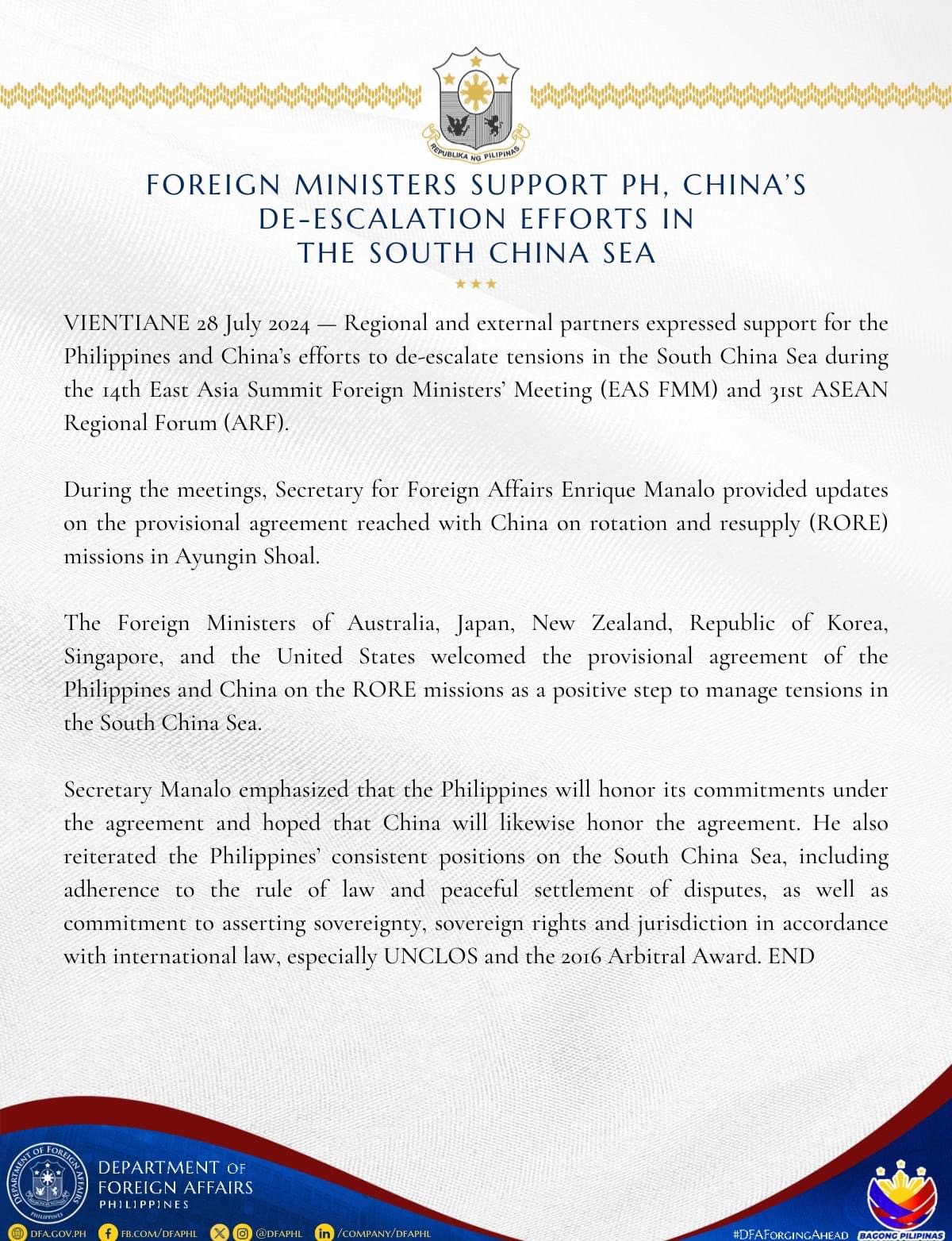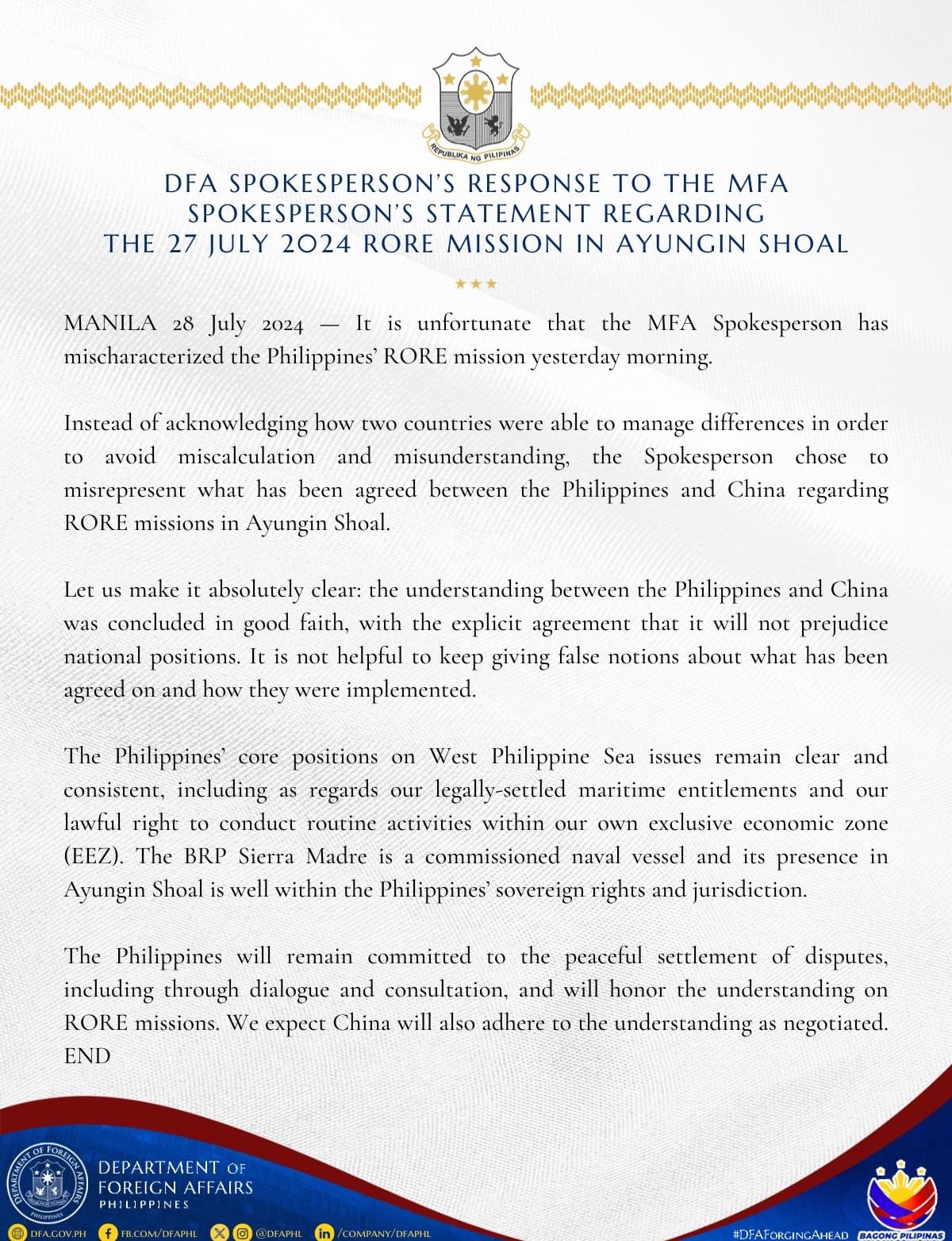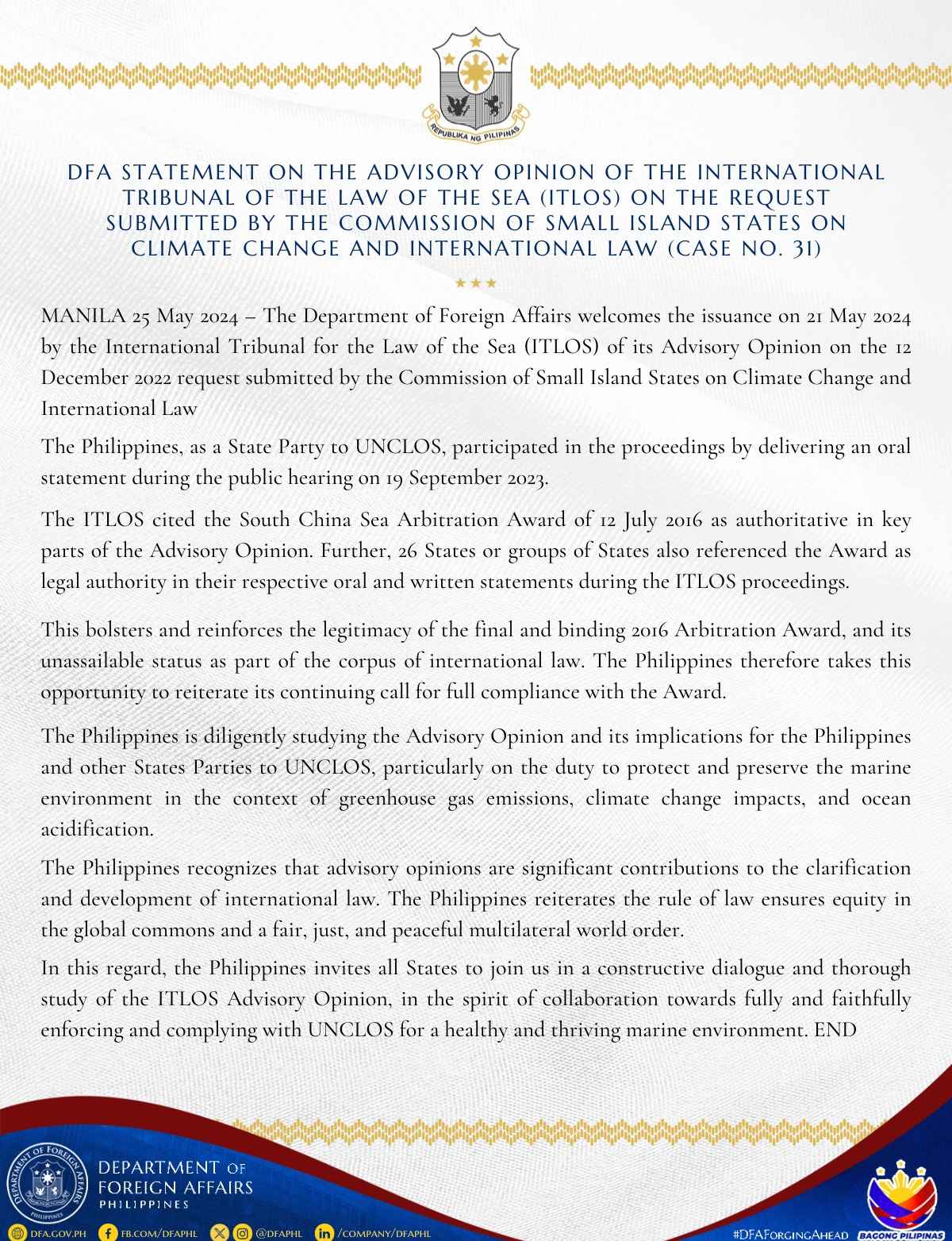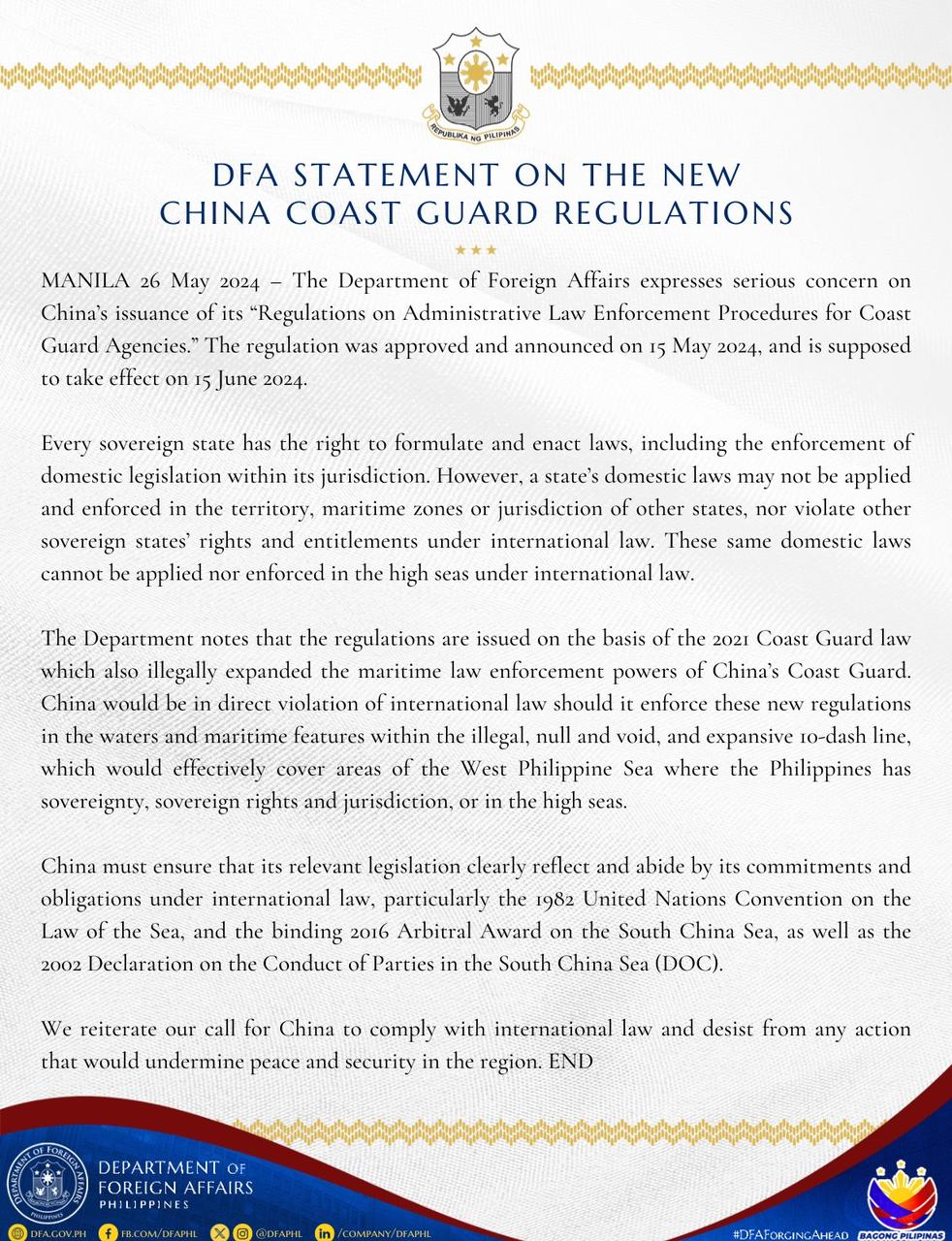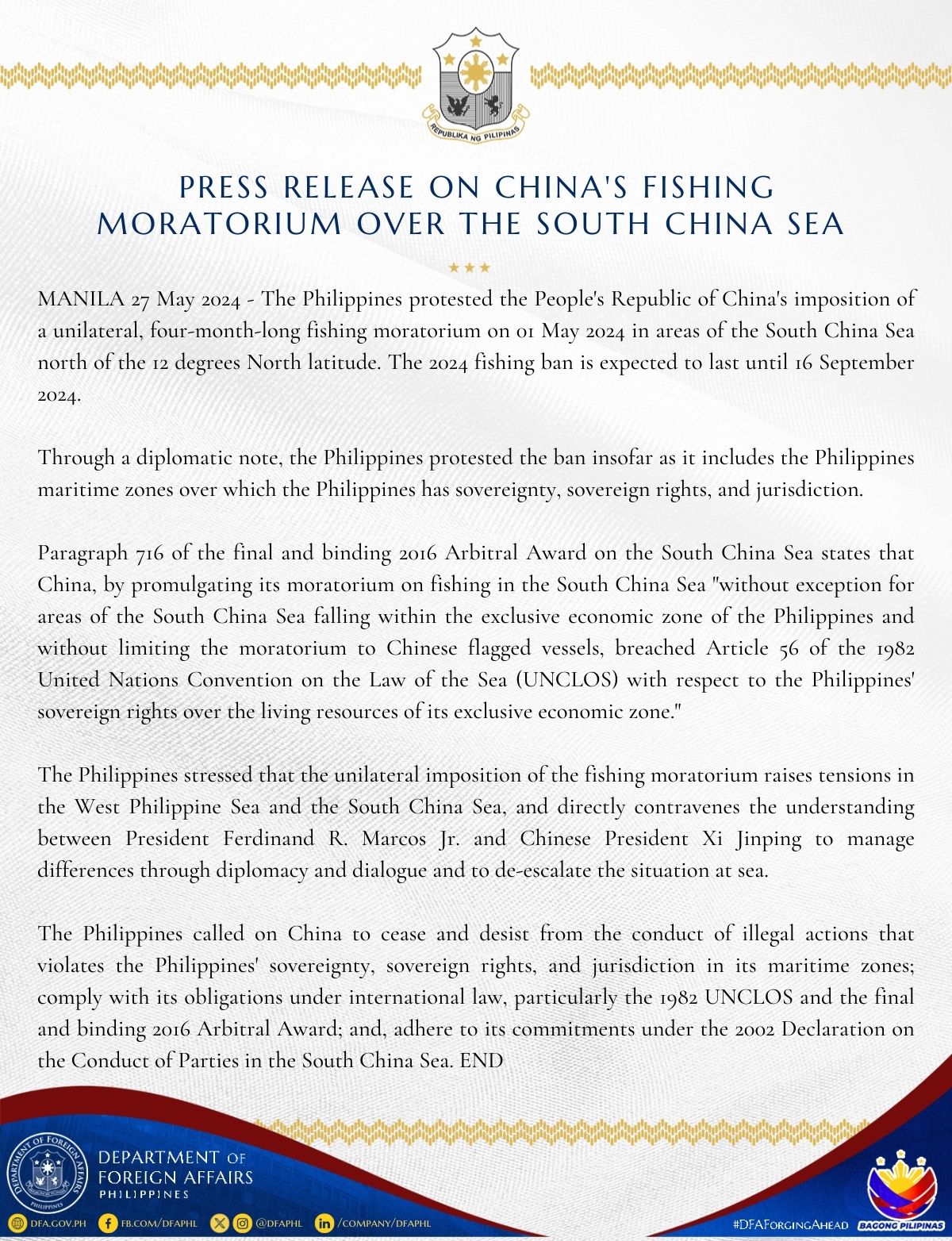Bienvenidos
La Embajada de la República de Filipinas en Buenos Aires se encarga de promover y proteger los intereses de Filipinas y el bienestar de los ciudadanos Filipinos en Argentina, Bolivia, Paraguay y Uruguay.
¿Quisiera saber más sobre las actividades de la Embajada?
¿Quisiera hacer negocios con Filipinas?
EMBASSY NEWS
- Tuesday, 30 July 2024 Foreign Ministers Support PH, China's De-Escalation Efforts in the South China Sea
- Tuesday, 30 July 2024 DFA Spokesperson´s Response to the MFA Spokesperson´s Statement Regarding the 27 July 2024 RORE Mission in Ayungin Shoal
- Tuesday, 28 May 2024 DFA Statement of the New China Coast Guard Regulations
- Tuesday, 28 May 2024 DFA Statement on the Advisory Opinion of the International Tribunal of the Law of the Sea (ITLOS) on the Request Submitted by the Commission of Small Island States on Climate Change and International Law (Case No. 31)
- Tuesday, 28 May 2024 Press Release on China´s Fishing Moratorium Over the South China Sea
More inEmbassy News
ANNOUNCEMENTS
- Thursday, 24 October 2024 Request for Quotation - For the Procurement of a Passenger Van (Non-Luxury) for the Philippine Embassy in Buenos Aires 2024
- Thursday, 10 October 2024 Notice of RERB Hearing - 21 October 2024
- Tuesday, 02 July 2024 Notice of RERB Hearing - July 2024
- Tuesday, 04 June 2024 Request for Quotation - For the Procurement of a Passenger Van (Non-Luxury) for the Philippine Embassy in Buenos Aires 2024
- Wednesday, 03 April 2024 Notice of RERB Hearing Cancellation April 2024
More inAnnouncements

